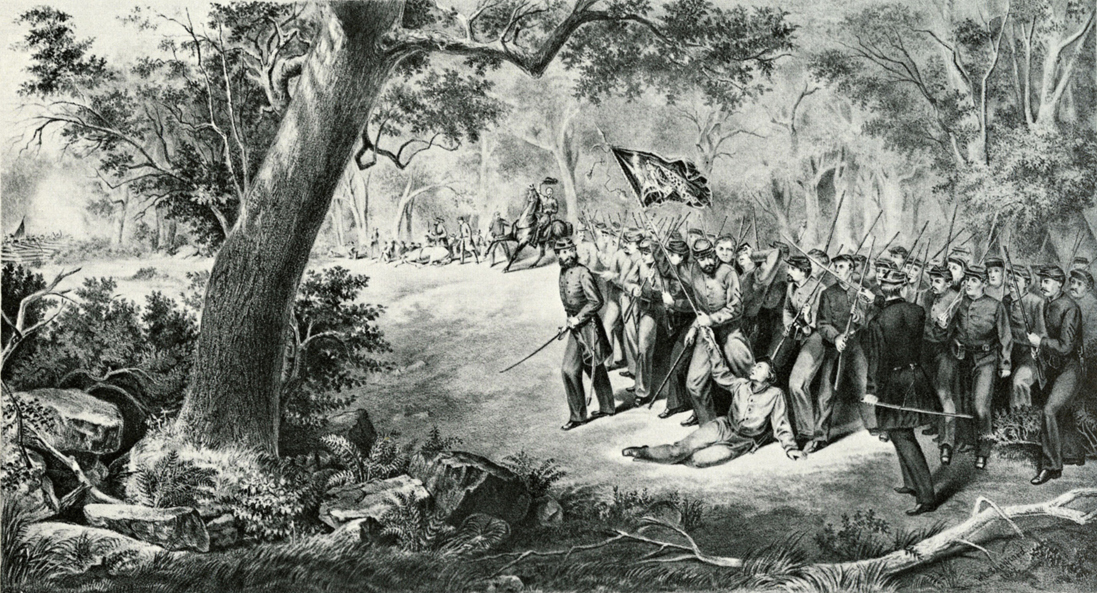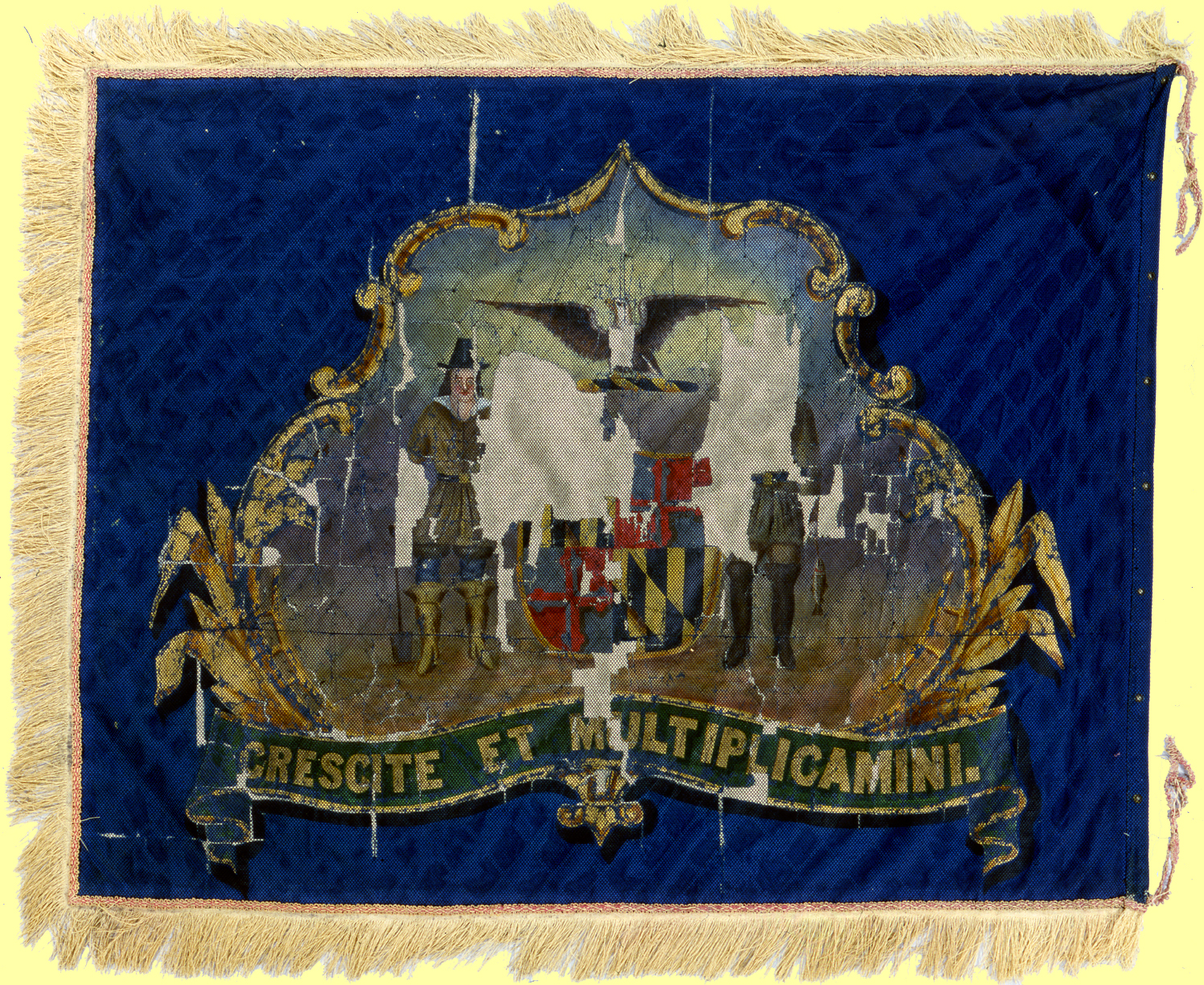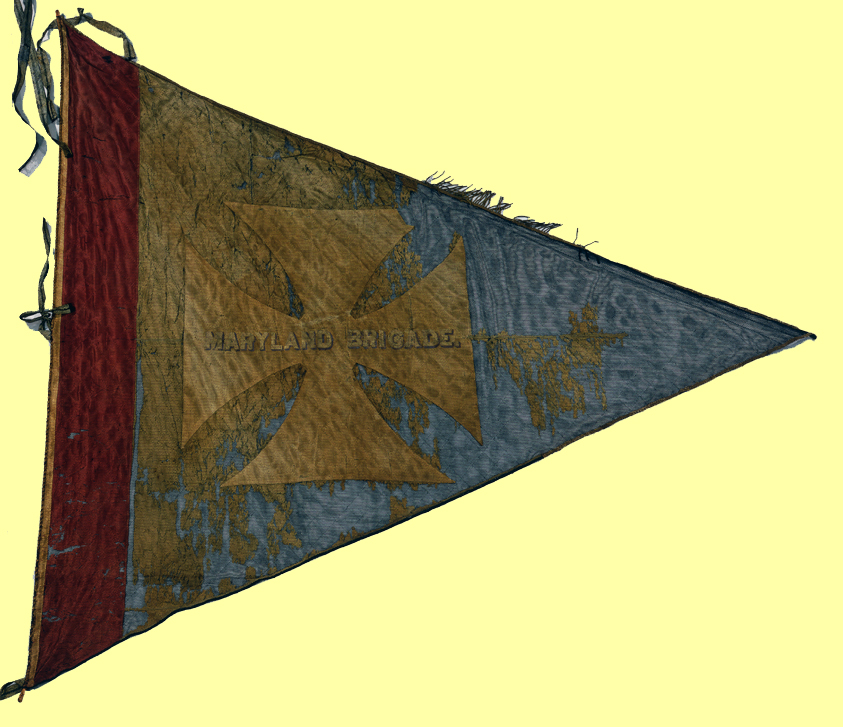Straddling Secession: Thomas Holliday Hicks and the Beginning of the Civil War in Maryland
- Hicks Exhibit Home
- The Gathering Storm
- Baltimore and Annapolis
- Calling the Legislature
- Burning the Bridges
- A Plot Aganist Lincoln?
- The War After Hicks
The War After Hicks

The Charge of the First Maryland Regiment
A. Hoen & Co., 1867
In 1862, Augustus W. Bradford took office as the next governor of Maryland. Like his predecessor, Bradford was a Unionist, and it was during his term that much of the fighting of the Civil War occured. During the war, Marylanders fought in both armies, with 60,000 eventually fighting for the Union and some 25,000 for the Confederacy. In May, 1862, Maryland troops from both sides faced each other at the Battle of Front Royal, Virginia.
Secessionist "Ladies of Baltimore" made the flag shown below for the men of the regiment, many of whom were likely relatives and friends. Baltimore resident Hetty Cary smuggled the banner through the Union lines and presented it to the First Maryland just prior to the Battle of Manassas (Bull Run) on July 21, 1861. The hole in the center was allegedly "torn by a busting shell" during the battle. The regiment followed it in every engagement during 1861-1862. In 1862, the troops attached a "bucktail" (or deer's tail) to the flag staff after defeating the First Pennsylvania "Bucktail" Rifles.
The First Maryland Regiment [CSA] under Colonel Bradley T. Johnson attacked and routed the Pennsylvania Bucktail Rifles and captured their commander during the 1862 Valley Campaign, the battle pictured above. Colonel Johnson recounted in 1882 that
We afterwards heard that of over 200 Bucktails who went into that fight only fifty came out.[t]he fight, short as it was, had cost us dearly.We lost Captain Michael S. Robertson, Company I, killed instantly.At the same time fell Lieutenant Nicholas Snowden, Company D, from Prince George of that well known family. At the time of the Baltimore outbreak he commanded a cavalry company, which he immediately put under arms until, like so many others, he found Hicks had betrayed the State, and he came to Virginia. No braver, or more gallant gentlemen than these have died for Southern Independence. With them fell six or eight more dead, Color-Sergeant Doyle was shot down, Color-Corporal Taylor caught the colors, but soon went down, the next Corporal to him caught them, but instantly falling, Corporal Shanks, Company H, seized them, lifting them arms length above his head, carried them safely through the fight.
The colors shown on the 1864 flag accompanied the brigade through every engagement from March, 1864 to Lee's surrender at Appomattox in April, 1865. Composed of several Maryland volunteer regiments, the brigade fought with distinction at Gettysburg, the Battle of the Wilderness and Appomattox Courthouse. The brigade's flag also had a finial, used to decorate the staff, featuring a Maltese Cross, the symbol of the Fifth Army Corps. Presented by a veterans' group to the State of Maryland in November of 1906, this flag was displayed in the State House, along with those of other Maryland Union regiments.

Regimental Color ("Bucktail Flag")
First Regiment, Maryland Infantry, CSA
Silk with hand-painting
MSA SC 1560-1-31

Flag of the Maryland Brigade (USA)
Silk with hand-painting
1864
MSA SC 1560-1-11
|
This web site is presented for reference purposes under the doctrine of fair use. When this material is used, in whole or in part, proper citation and credit must be attributed to the Maryland State Archives. PLEASE NOTE: The site may contain material from other sources which may be under copyright. Rights assessment, and full originating source citation, is the responsibility of the user. |
© Copyright December 15, 2023 Maryland State Archives
